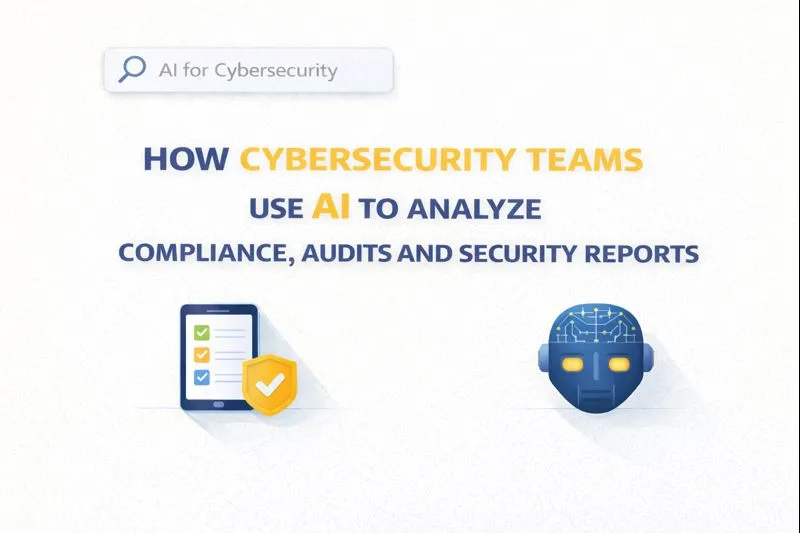Sharing Your Most Effective Marketing Hacks

TL;DR
Understanding the Landscape: Marketing Challenges in B2B SaaS Cybersecurity
Okay, so marketing for cybersecurity in the b2b SaaS world? It's not your average gig. Forget those tired playbooks – they just don't cut it here. (Want to get more done? Here's the dirty little secret: Do less. If you ...)
Trust is Paramount: You're selling security, so any whiff of inauthenticity means game over. This means showcasing real customer success stories, transparent security practices, and clear, honest communication about your product's capabilities and limitations. It's about building a reputation for reliability in a field where breaches can have devastating consequences.
Complexity Kills: Cybersecurity's already confusing. If your marketing is too, people will bounce FAST. Think about explaining advanced threat detection or zero-trust architecture in simple, relatable terms, using analogies or case studies that highlight the benefit rather than just the technical jargon.
Evolving threats: staying ahead of the curve, is like chasing a greased pig. You need to adapt quick. This means your marketing needs to be agile, constantly updating messaging to reflect the latest threats and how your solution addresses them. It's not about static brochures, but dynamic content that speaks to current anxieties.
Traditional marketing, it's like bringing a knife to a gunfight, honestly. When established methods fail to cut through the noise and build the necessary trust, a more agile, experimental approach is needed. So, what does work? Let's dive into some "hacked" approaches...
Growth Hacking 101: Core Principles and Mindset
Growth hacking? It's more than just a buzzword—it's a whole mindset. It’s about finding clever, often unconventional ways to grow your customer base quickly and efficiently.
Experimentation is Key: Think of it like running a science lab, but for marketing. Constantly testing new ideas and seeing what sticks is vital. This means A/B testing landing pages, ad copy, email subject lines, and even different outreach channels.
Data-Driven Decisions: Forget gut feelings; let the numbers guide you. Track everything, analyze the results, and double down on what works. This involves setting up robust tracking mechanisms to understand user behavior and campaign performance.
Continuous Improvement: Marketing never stands still, so neither should you. Keep learning, adapting, and tweaking your strategies for maximum impact. It’s a cycle of build, measure, learn, and repeat.
So, where do we go from here? Let's talk about some growth tactics you can use.
pSEO: Precision Targeting for Cybersecurity Clients
pSEO, or precision SEO, it's like traditional seo but on steroids. Instead of casting a wide net, you're laser-focusing on the keywords your ideal cybersecurity client is actually searching for. Think "incident response plan template for healthcare" instead of just "cybersecurity." This hyper-targeting involves using advanced keyword research tools to identify highly specific, long-tail queries that indicate strong buyer intent.
Niche Down: The more specific, the better. Target long-tail keywords that address very specific pain points. This means going beyond broad terms to capture users with immediate needs, like "SaaS security compliance for HIPAA" or "endpoint detection and response for financial services."
Intent is Everything: Focus on keywords with high commercial intent – terms someone uses right before they're ready to buy. This could be phrases like "best cybersecurity solution for [industry]" or "compare [competitor] vs [your product]."
Content is King (Still): Create in-depth, helpful content that directly answers the questions behind those keywords. None of that fluff stuff! This means developing detailed guides, checklists, or templates that directly solve the problem implied by the search query.
For instance, a cybersecurity firm specializing in ransomware protection for law firms might create a landing page optimized for "prevent ransomware attack law firm." You know, make it super specific!
Next up, how to make your content irresistible?
Programmatic SEO for Scalable Content Generation
Programmatic seo? It sounds super complicated, but it's really just scaling content creation using templates and data. Think of it like this: instead of writing one-off articles, you're building a content machine. This involves creating structured templates where specific data points can be dynamically inserted to generate numerous unique pages.
Automate repetitive tasks: Find those keywords with slight variations (like "cybersecurity for dentists," "cybersecurity for lawyers," etc.). Then, create a template and automatically generate pages. For example, a template might look like: "Protecting Your [Industry] Business: Essential Cybersecurity Solutions for [Industry Type]."
Diverse Industries: It's not just for cybersecurity! Retailers can use it for product variations, and finance firms can make pages for different loan types. The core idea is to leverage structured data to create content at scale for numerous variations of a core topic.
Dynamic content: Keep things fresh by pulling in real-time data, like threat statistics or compliance updates. The data inputs for a template could include industry-specific risks, relevant compliance regulations, or common attack vectors for that sector.
So, how do you make sure all this automated content isn't just, well, bad? That's what we'll dive into next.
Social Media Hacks for Cybersecurity Growth
Wanna get your cybersecurity message out there without sounding like every other security vendor? Social media's your playground, but you gotta play it smart. It's about building a community and sparking conversations, not just broadcasting.
Hook 'em with visuals: Ditch the boring stock photos; think infographics or short videos. According to PC Social, visuals are key for engagement. A compelling infographic explaining a complex threat or a short explainer video about a new security feature can grab attention much faster than text alone.
Be human, not a robot: Nobody wants to follow a company that only posts about products. Share insights, ask questions, and show personality. This means engaging with comments, participating in industry discussions, and sharing behind-the-scenes glimpses of your team or company culture.
Hashtags ARE your friend: But don't go overboard! Research relevant hashtags, like #cybersecurity or #infosec, to broaden your reach. Using a mix of broad and niche hashtags can help you connect with a wider audience while also reaching specific communities.
Social media is a powerful channel for distributing valuable content and engaging with your target audience. This naturally leads us to the next crucial element: creating that compelling content.
Content Marketing Hacks That Convert
Content marketing, the gift that keeps on giving! But, like, how do you make sure folks actually convert after reading your stuff? It's about creating content that not only educates but also guides potential customers towards a decision.
Lead magnets are key: Think ebooks, templates, or even a free cybersecurity risk assessment, you know? Make it something valuable that solves a real problem. An effective lead magnet provides immediate value in exchange for contact information, such as a comprehensive guide to GDPR compliance for SaaS companies or a checklist for securing remote workforces.
Repurpose, repurpose, repurpose! Repurpose, repurpose, repurpose! Turn blog posts into infographics, short videos for LinkedIn, or even design a presentation template for your next webinar. This maximizes the reach of your core content and caters to different learning preferences.
Optimize: Make sure your landing pages are on point. Clear call to actions and easy forms get more conversions. This means ensuring your landing pages are mobile-friendly, load quickly, and have a clear, compelling offer with a straightforward conversion path.
Let's dive into how to create those irresistible lead magnets that really get people hooked.
Automation and AI: Supercharging Your Marketing Efforts
ai and automation? they're not just buzzwords anymore, but tools that are really changing how we do marketing. I mean, who doesn't want to work smarter, not harder?
Content that's optimized thanks to ai: ai tools can help find the best keywords and even write some basic content. Just, uh, make sure a human gives it a once-over, yeah? AI can analyze vast datasets to identify trending topics and optimize content for search engines, but human oversight is crucial for nuance and brand voice.
Automated social posts: Instead of manually posting every tweet, schedule 'em in advance. saves so much time, honest! Tools can help you plan and schedule your social media calendar, ensuring consistent engagement across platforms.
Email marketing on autopilot: Set up email sequences that trigger based on user actions. it's like having a sales team that works 24/7, but without the coffee breaks. This could include welcome sequences for new subscribers, nurture campaigns for leads, or re-engagement emails for inactive users.
Ready to dive into how lead magnets can really boost your conversions?
Measuring and Analyzing Your Results
Alright, so you've been putting in the work, launching campaigns and posting content... but how do you know if it's actually doing anything? That's where measuring and analyzing comes in! It's how you know if your efforts are paying off or if you need to pivot.
Website traffic is key. I mean, are folks even seeing your stuff? You'll wanna track where they're coming from, too. Are they finding you through pSEO, or is it social media that's working its magic? Key metrics here include unique visitors, traffic sources, bounce rate, and time on page. Tools like Google Analytics are your best friend.
Lead generation is important, too. Are you actually getting more leads? and are these leads actually qualified? Track metrics like Marketing Qualified Leads (MQLs) and Sales Qualified Leads (SQLs). Your CRM will be essential for this.
Conversion rates tell you if you are doing a good job. Are people actually buying your cybersecurity solution, or are they just downloading your ebook and leaving? Look at lead-to-customer conversion rates, demo request conversion rates, and overall customer acquisition cost (CAC).
Basically, use analytics tools to keep an eye on all this, it's the only way you'll really know whats working!
Bringing It All Together: Your Integrated B2B SaaS Cybersecurity Marketing Strategy
So, we've talked about a bunch of different tactics – from precision SEO and programmatic content to social media and automation. But how do you make sure all these pieces actually work together to drive real growth? It's all about creating a cohesive strategy, not just a collection of random tactics.
Think about the customer journey. A potential client might first discover you through a highly targeted pSEO search for a specific security problem. They then download a valuable lead magnet (like a compliance checklist) from a landing page optimized for conversions. This triggers an automated email nurture sequence, which might include sharing relevant social media content or blog posts. As they move further down the funnel, AI-powered tools can help personalize their experience and ensure they're seeing the most relevant information. Finally, all of this activity needs to be measured and analyzed to refine your approach.
Your strategy should prioritize tactics based on your specific business goals and target audience. Are you focused on rapid lead generation? Then perhaps programmatic SEO and targeted social media campaigns should take center stage. Is building deep trust and authority your priority? Then in-depth content marketing and thought leadership might be more crucial. The key is to understand how each tactic supports the others and contributes to the overall objective of acquiring and retaining customers in the competitive B2B SaaS cybersecurity market.




